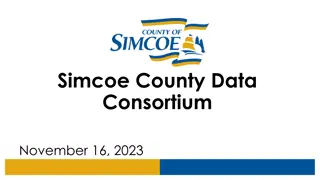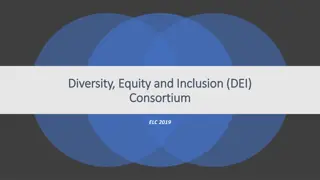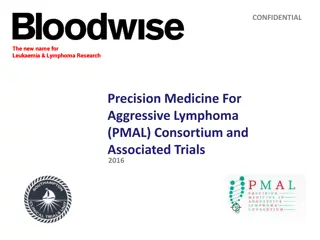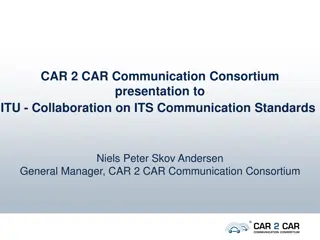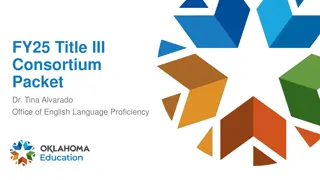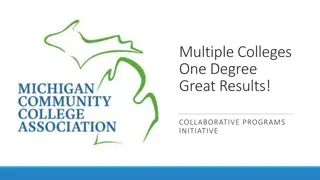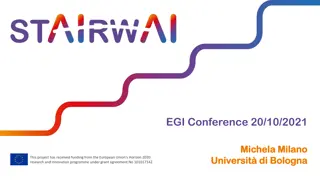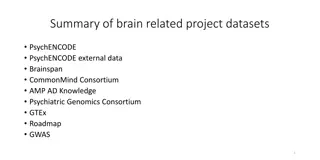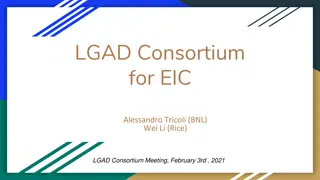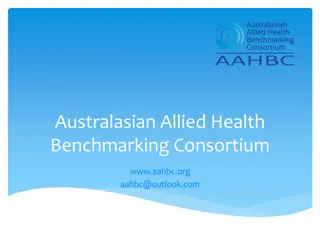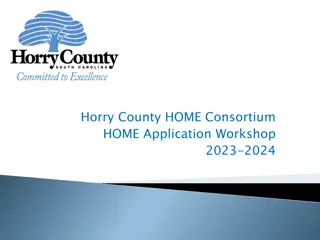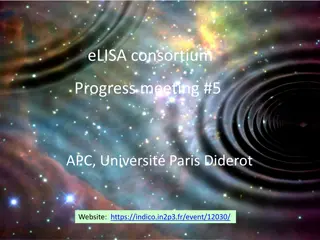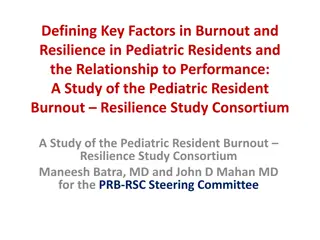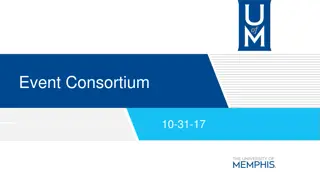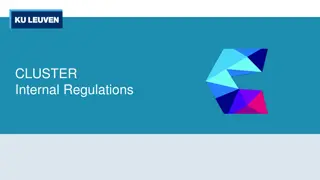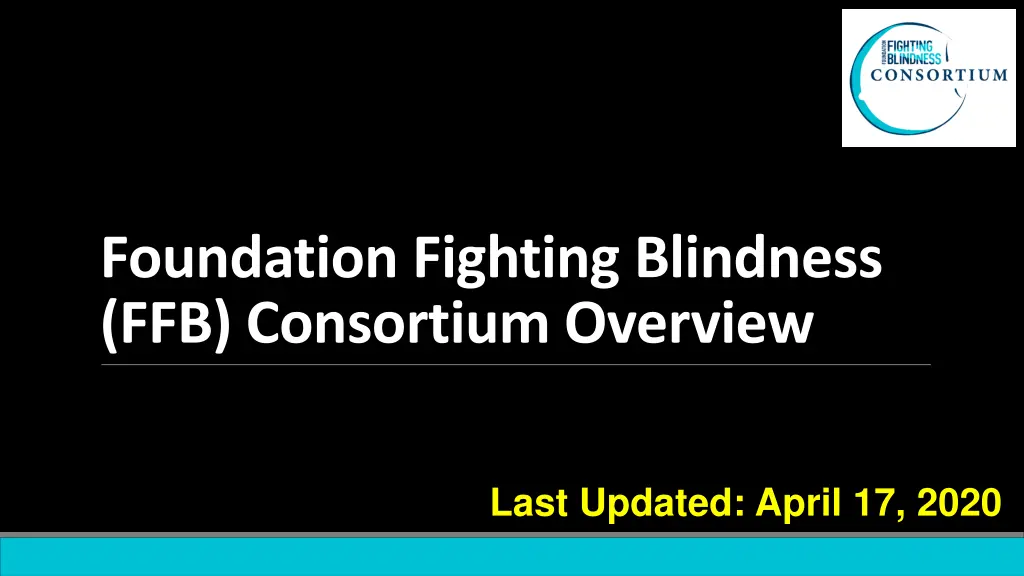
Foundation Fighting Blindness Consortium: Accelerating Treatments for Inherited Retinal Disorders
Foundation Fighting Blindness (FFB) Consortium aims to build a collaboration of clinical centers to conduct studies in rare inherited retinal disorders, with a focus on accelerating treatment development. The model includes collaboration on study design, data archiving, and more. Learn about the Consortium's organizational structure, clinical sites, active status, and how to get involved in advancing research and innovation in treating IRDs.
Download Presentation

Please find below an Image/Link to download the presentation.
The content on the website is provided AS IS for your information and personal use only. It may not be sold, licensed, or shared on other websites without obtaining consent from the author. If you encounter any issues during the download, it is possible that the publisher has removed the file from their server.
You are allowed to download the files provided on this website for personal or commercial use, subject to the condition that they are used lawfully. All files are the property of their respective owners.
The content on the website is provided AS IS for your information and personal use only. It may not be sold, licensed, or shared on other websites without obtaining consent from the author.
E N D
Presentation Transcript
Foundation Fighting Blindness (FFB) Consortium Overview Last Updated: April 17, 2020
Foundation Fighting Blindness (FFB) Consortium Mission Statement Foundation Fighting Blindness (FFB) seeks to build a Consortium for the purpose of conducting clinical studies in patients with rare inherited retinal disorders (IRDs). The goal of FFB is to accelerate the development of treatments for IRDs. To accomplish this, FFB plans to build centers of excellence to participate in sponsored clinical studies. Investigators from participating clinical centers will collaborate on ideas for hypotheses, study designs, analysis plans, and publications. Data from the completed trials will be archived in an open central repository to stimulate further hypothesis generation and innovation.
FFB Consortium Model The Consortium model includes: 1. Investigators from participating clinical centers collaborate on ideas for hypotheses, study designs, and publications 2. Consortium studies provide Long-term data about disease onset and progression Identify sensitive structural and functional outcome measures for future clinical trials 3. Data from completed studies will be archived in an open central repository to stimulate further hypothesis generation and innovation
FFB Consortium Organizational Structure Scientific Advisory Board FFB Executive Committee Reading Centers Duke Reading Center Casey Reading Center Coordinating Center Jaeb Center for Health Research Operations Committee Genetics Committee Clinical Sites
FFB Consortium Clinical Sites Kellogg Eye Center OHSU Cincinnati Eye Inst Columbia U Baylor College Emory U Ghent U MEE MCW Moorfields NEI CHNO des Quinze-Vingts Radboud U RFSW Rutgers Scheie Eye Inst UCSF Hosp for Sick Children U of Tuebingen U of Utah Vitreo Retinal Assoc Wilmer Eye Inst Duke Colorado Retina Assoc U of Arkansas U of NC Med U of Lublin Stanford Bascom Palmer U of Wisconsin Assoc Retina Consult UCSD Helsinki U Hosp Hadassah-Hebrew U UPMC Fed U of S o Paulo U of Kentucky CAROT
FFB Consortium Status Active 38 149 342 Total 38 164 444 Sites (Community and Academic Centers) Investigators Other Personnel
How to Join the Consortium Complete a Clinical Site Application Available on the public website homepage (ffb.jaeb.org) Email completed form to ffb@jaeb.org
How to Submit a Protocol Idea Complete a Protocol Idea Form Available on the public website homepage (ffb.jaeb.org) Email completed form to ffb@jaeb.org See FAQ on the public website homepage (ffb.jaeb.org) for more information
How to Request Use of Consortium Data It depends on that status of the data and the intended use See FAQ on the public website homepage (ffb.jaeb.org) for more information Email completed request forms to ffb@jaeb.org
Studies Currently Enrolling or in Follow Up
FFB Consortium Studies - #1 Rate of Progression in USH2A-related Retinal Degeneration (RUSH2A) Design: 4-year natural history study Objectives: 1. Characterize the natural history of retinal degeneration associated with USH2A 2. Investigate structure-function relationships 3. Evaluate possible risk factors (genotype, phenotype, environmental, and comorbidities) for progression of the outcome measures 4. Evaluate variability (test-retest) and symmetry (left vs right eye) of select outcomes Final Sample Size: 127 participants NCT03146078 Status: Concluded recruitment in early 2019, 4-year follow-up to be completed in early 2023
FFB Consortium Studies - #2 Rate of Progression in EYS-related Retinal Degeneration (Pro-EYS) Design: 4-year natural history study Objectives: 1. Characterize the natural history of retinal degeneration associated with EYS 2. Investigate structure-function relationships 3. Evaluate possible risk factors (genotype, phenotype, environmental, and comorbidities) for progression of the outcome measures 4. Evaluate variability (test-retest) and symmetry (left vs right eye) of select outcomes Sample Size Goal: 100 participants NCT04127006 Status: Recruitment to be completed in 2020, 4-year follow-up to be completed in late 2024
General Overview of Outcome Measures in our Natural History Studies Structural outcome measures OCT ellipsoid zone [EZ] area Functional outcome measures Static perimetry [SP], microperimetry [MP], full-field stimulus threshold, electroretinography, visual acuity, contrast sensitivity, fundus autofluorescence Structure-function relationships SP OCT overlay, MP-OCT overlay Patient-reported outcome measures Visual function questionnaires and quality of life questionnaires
Completed Studies Currently there are no completed studies
Where to Find Results of Consortium Studies All publications are listed under the PUBLICATIONS tab of the public website (ffb.jaeb.org) Summary slides of all publications are available under the PRESENTATIONS tab of the public website (ffb.jaeb.org)


